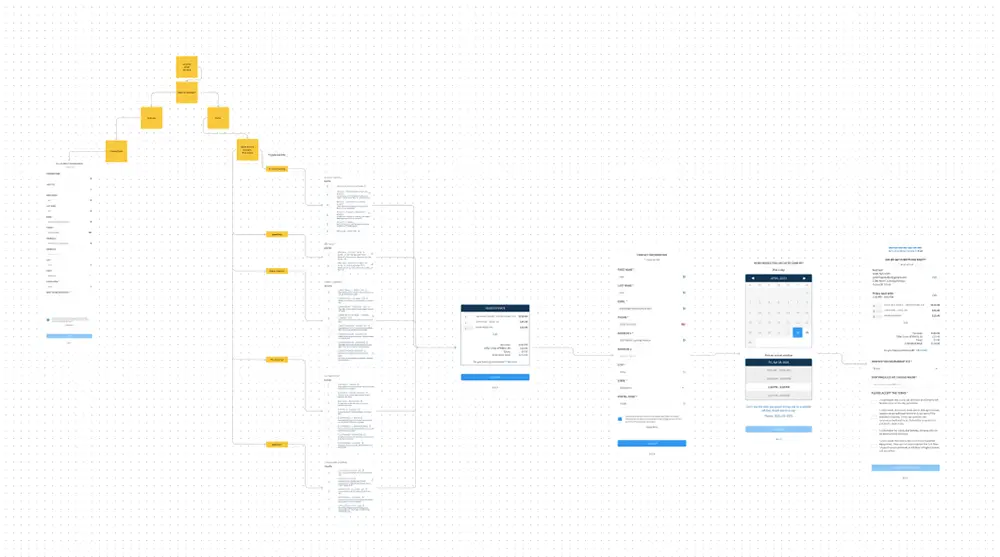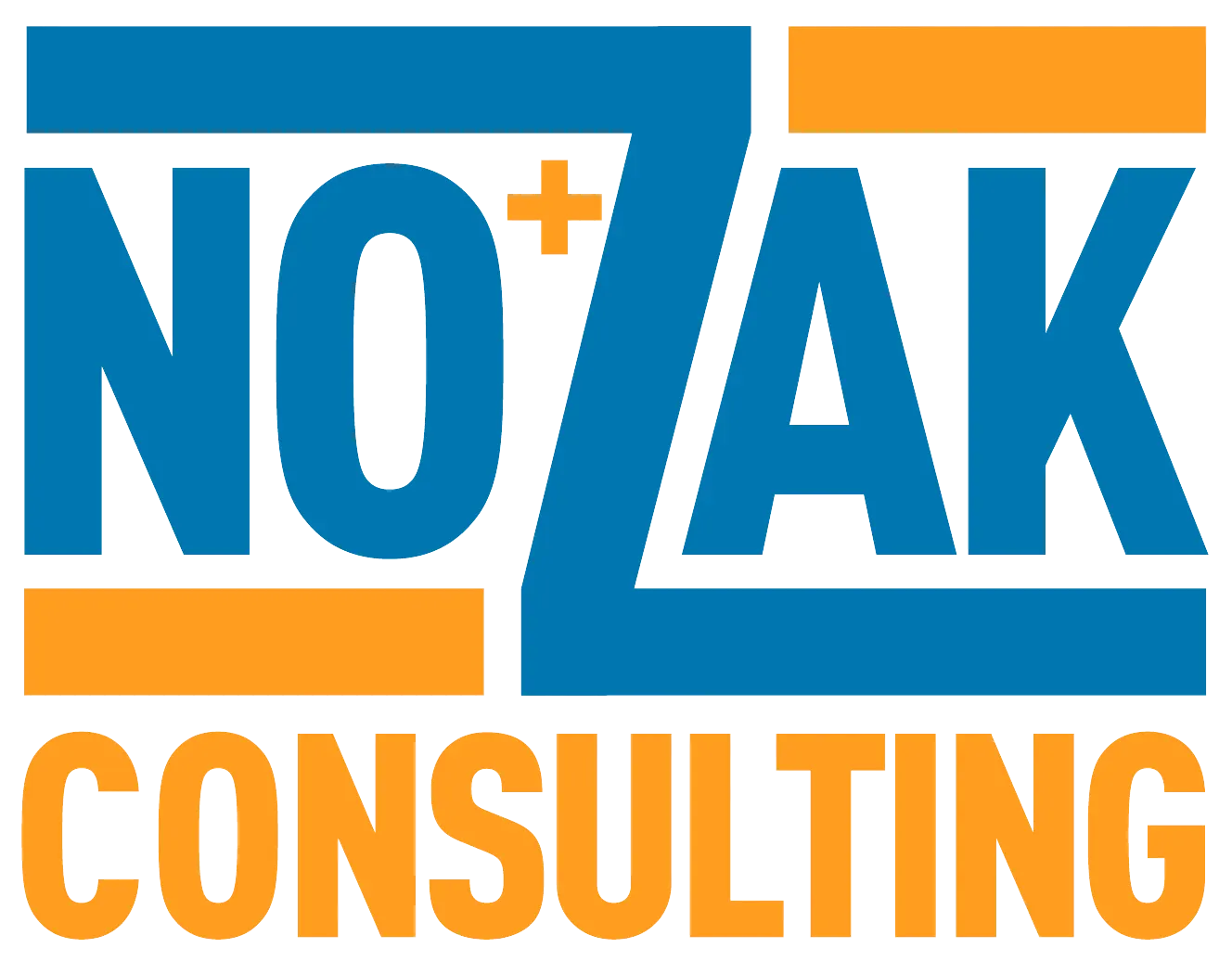As a small business owner, you understand that marketing is crucial for the growth and success of your business. But with so many different marketing strategies and tactics out there, it can be overwhelming to know where to start or what to focus on.
Nozak Consulting has been helping small businesses across the country with their marketing since 2015 and we’ve learned a thing or two in that time. We know the unique challenges that small businesses face regardless of their industry or experience of their owners.
That’s why we’ve put together this comprehensive resource to help you navigate the world of marketing and develop a plan that works for your unique business needs. Whether you’re just starting out or looking to revamp your current marketing efforts, this guide will provide you with the tools, tips, and strategies you need to effectively market your small business and reach your target audience.
So, let’s dive in and explore the exciting world of small business marketing together!

Identify Your Target Demographic and Their Pain Points
Identifying your target audience is one of the most important steps in developing a successful marketing strategy for your small business. Knowing who your ideal customer is will help you tailor your messaging, choose the right marketing channels, and create content that resonates with your audience. To identify your target audience, start by considering the following:
Demographics: Who are your ideal customers in terms of age, gender, location, income, and other factors?
Pain Points: What are the problems, needs, or desires of your ideal customers that your product or service can solve or fulfill?
How to Identify Your Target Demographics
There are several tools that small businesses can use to identify their target demographic:
Google Analytics
This free tool provides valuable insights into the demographics and interests of your website visitors, such as age, gender, location, and behavior. By analyzing this data, you can get a better understanding of who your target audience is and adjust your marketing strategy accordingly.
Social Media Insights
Social media platforms like Facebook, Instagram, and Twitter offer insights into your audience demographics, interests, and behaviors. By using these insights, you can refine your social media marketing strategy to better target your ideal customers.
Customer Surveys
Surveys are a great way to gather information directly from your customers about their demographics, pain points, and preferences. You can use tools like SurveyMonkey or Google Forms to create and distribute surveys to your email list or social media followers.
Competitor Analysis
Analyzing your competitors can give you insights into their target audience and how they are effectively reaching and engaging them. You can use tools like SimilarWeb or SEMrush to analyze your competitors’ website traffic and social media engagement.
By utilizing these tools, small businesses can gain valuable insights into their target demographic and create a more effective marketing strategy to reach and engage their ideal customers.
You can also learn a lot about your customers simply by interacting with them and building relationships.
Remember, there’s more to understanding your customers than simply their age, gender, and education. You also need to know things like which social media platforms they spend the most time on, whether they do thorough research before purchasing a product or if they’re impulse buyers, and how they prefer to contact a company.
Just like older generations prefer Facebook to Instagram and TikTok, younger generations prefer text or email over a traditional phone call. The more you know about your audience, the better.
Addressing Pain Points
Let’s take a look at some examples of small businesses and how they address the pain points of their target audience:
An organic skincare company targeting women aged 25-45 who are concerned about the health and appearance of their skin. The company creates content and messaging that speaks to the importance of using natural ingredients, avoiding harmful chemicals, and embracing a healthy lifestyle. They also offer personalized skincare recommendations and tutorials to help their customers achieve their desired results.
A local bakery targeting families with young children who want to provide their kids with healthy and delicious baked goods. The bakery creates content and messaging that emphasizes the use of whole, natural ingredients and highlights their commitment to providing nutritious snacks and treats for kids. They also offer workshops and classes for parents and kids to learn how to bake healthy treats at home.
A boutique gym targeting busy professionals who want to prioritize their health and fitness but struggle to find the time. The gym creates content and messaging that speaks to the benefits of short, high-intensity workouts and offers convenient class times to fit into their customers’ busy schedules. They also offer personalized training and nutrition plans to help their customers achieve their fitness goals.
By understanding the demographics and pain points of their target audience, these small businesses are able to tailor their marketing efforts to effectively reach and resonate with their ideal customers. By doing so, they can build stronger relationships with their customers, increase brand loyalty, and ultimately drive more sales and revenue for their business.

Marketing Funnels and Customer Journeys
Building and mapping marketing funnels and customer journeys is an important step in creating a comprehensive marketing strategy for your small business. A marketing funnel is a framework that illustrates the different stages that a potential customer goes through before making a purchase, while a customer journey maps out the touchpoints and interactions that a customer has with your business throughout their entire experience.
Here’s how to build and map your marketing funnels and customer journeys:
Define Your Funnel Stages
Start by defining the different stages of your marketing funnel. This typically includes awareness, consideration, and conversion. For example, in the awareness stage, potential customers become aware of your business and what you offer. In the consideration stage, they evaluate your product or service and compare it to other options. In the conversion stage, they make a purchase or take another desired action.
TOFU, MOFU, and BOFU are acronyms that represent the different stages of a marketing funnel. They stand for Top of Funnel, Middle of Funnel, and Bottom of Funnel, respectively. Understanding these different stages can help you create content that is tailored to your audience at each stage of their journey.
Here’s an overview of each stage:
Top of Funnel (TOFU)
This is the awareness stage of the funnel, where potential customers are just becoming aware of your business and what you offer. The goal of TOFU content is to educate and inform potential customers, without being overly promotional. Content at this stage might include blog posts, social media updates, infographics, and videos that provide helpful information related to your industry or niche.
Middle of Funnel (MOFU)
This is the consideration stage of the funnel, where potential customers are evaluating their options and deciding whether or not to make a purchase. The goal of MOFU content is to provide more detailed information about your products or services, and how they can benefit your audience. Content at this stage might include case studies, product demos, webinars, and white papers.
Bottom of Funnel (BOFU)
This is the conversion stage of the funnel, where potential customers are ready to make a purchase or take another desired action. The goal of BOFU content is to encourage potential customers to take action, by providing incentives or promotions that make it more appealing to do so. Content at this stage might include free trials, special discounts, limited-time offers, and customer testimonials.
By understanding the different stages of the marketing funnel and creating content that is tailored to your audience at each stage, you can create a more effective marketing strategy that engages your audience and encourages them to take action.
Identify Your Touchpoints
Next, identify the different touchpoints that your potential customers have with your business throughout their journey. This includes your website, social media profiles, email campaigns, advertisements, and any other channels that you use to engage with your audience.
Map Your Customer Journey
Once you’ve identified your touchpoints, map out your customer journey to show how a potential customer moves through the different stages of your funnel. This can be done using a visual diagram or customer journey map.
Create Content for Each Stage
Finally, create content for each stage of your funnel that addresses the needs and pain points of your potential customers. For example, in the awareness stage, create content that educates and informs potential customers about your business and what you offer. In the consideration stage, provide more detailed information about your product or service and how it can benefit them. In the conversion stage, offer incentives or promotions to encourage potential customers to take action and make a purchase.
By building and mapping your marketing funnels and customer journeys, you can create a more targeted and effective marketing strategy that addresses the needs and pain points of your potential customers at each stage of their journey. This can lead to higher engagement, more conversions, and ultimately, greater success for your small business.

Perform a Competitive Analysis
Performing a competitive analysis is an essential part of any marketing effort for a small business. By identifying your competitors’ strengths and weaknesses, you can develop a marketing strategy that sets your business apart and helps you stand out in your industry or niche.
Here are the steps to perform a competitive analysis:
Identify Your Competitors
Start by identifying your competitors in your industry or niche. This might include businesses that offer similar products or services, target the same audience, or operate in the same geographic region.
These can be obvious, such as a snow cone stand competing against another snow cone stand, or less direct. For instance, a movie theater, a skate rink, and a bowling alley are all competing to be the top weekend entertainment venue even though they offer very different services.
Analyze Their Website
Once you’ve identified your competitors, take a close look at their website. Evaluate its design, user experience, and content. Look for ways that you can differentiate your own website and make it more appealing to potential customers.
Evaluate Their Social Media
Next, evaluate your competitors’ social media presence. Look at the platforms they’re using, the content they’re sharing, and their engagement levels. Identify any areas where your own social media strategy can be improved.
Assess Their Brand Visibility
Consider your competitors’ overall brand visibility. Look at their logo, brand messaging, and overall brand identity. Consider how you can differentiate your own brand and make it more memorable and recognizable.
Review Their Marketing Strategy
Finally, review your competitors’ marketing strategy. Look at their advertising, promotions, and other marketing tactics. Identify any gaps or opportunities where you can differentiate your own marketing efforts and stand out in your industry.
By performing a competitive analysis, you can gain valuable insights into your competitors’ strengths and weaknesses, and develop a marketing strategy that sets your business apart. With a clear understanding of your competitors’ website, social media, brand visibility, and marketing strategy, you can make informed decisions about how to position your business and attract more customers.
How to Market Your Small Business
Create a Value Proposition
Creating a strong value proposition is an important way for small businesses to differentiate themselves from their competitors. A value proposition is a clear statement of the benefits that your business provides to customers and how you differentiate yourself from competitors.
This might include things like superior quality, better customer service, faster delivery times, or more affordable pricing.
Here are some examples of value propositions from different industries:
Apple: “Think Different” – Apple’s value proposition emphasizes its unique and innovative products that set it apart from competitors. It appeals to customers who value creativity and individuality.
Amazon: “Earth’s most customer-centric company” – Amazon’s value proposition is focused on providing the best customer experience possible. Its emphasis on convenience, fast delivery, and low prices appeals to customers who prioritize efficiency and value.
Zappos: “Delivering happiness” – Zappos’ value proposition is centered around providing exceptional customer service and a positive shopping experience. It appeals to customers who value personalized attention and a seamless shopping process.
Patagonia: “Build the best product, cause no unnecessary harm, use business to inspire and implement solutions to the environmental crisis.” – Patagonia’s value proposition emphasizes its commitment to sustainability and environmental responsibility. It appeals to customers who prioritize ethical and socially responsible business practices.
Dollar Shave Club: “Shave Time, Shave Money” – Dollar Shave Club’s value proposition focuses on convenience and affordability. It appeals to customers who are looking for a simple and cost-effective solution for their grooming needs.
These are just a few examples of how different companies use value propositions to differentiate themselves from their competitors and appeal to their target audiences. A strong value proposition can be a powerful tool for attracting and retaining customers, and should be an important part of any small business marketing strategy.
Highlight the Benefits
Once you’ve identified your unique selling proposition, highlight the benefits that your business provides to customers. Be clear and specific about how your products or services can help them solve their problems or meet their needs.
Keep it simple. Your value proposition should be concise and easy to understand. Use simple language and avoid jargon or technical terms that might confuse potential customers.
Test and Refine
Finally, test your value proposition with your target audience and refine it based on their feedback. Be open to making changes and tweaking your messaging until you find a value proposition that resonates with your customers.
By creating a value proposition that highlights your unique selling proposition and the benefits that your business provides to customers, you can differentiate yourself from your competitors and attract more customers to your business. A strong value proposition can help you stand out in a crowded market and position your business for long-term success.
Plan Your Brand Messaging and Story
A small business’s brand story and messaging are critical components of its marketing strategy. They help to define the brand’s identity, establish a connection with customers, and differentiate the business from competitors. Here are some key elements of brand story and messaging:
Brand Promises
A brand promise is a statement that communicates what customers can expect from your business. It sets the tone for your brand and helps to build trust with your audience. Your brand promise should be unique, relevant, and easy to understand.
Positioning Statements
A positioning statement is a concise summary of how your business is different from competitors. It should be focused on your target audience and highlight your unique value proposition. Your positioning statement should be clear, memorable, and easy to communicate.
Brand Mission
Your brand mission should be a statement of the purpose and values that guide your business. It should communicate what you stand for and why you do what you do. Your brand mission should be authentic, inspiring, and relevant to your target audience.
Tone of Voice
Your tone of voice is the personality of your brand. It should be consistent across all your marketing channels and reflect your brand’s values and personality. Your tone of voice should be appropriate for your target audience and communicate your brand’s message in a way that resonates with them.
By developing a strong brand story and messaging, small businesses can build a powerful connection with their audience and establish a unique identity that sets them apart from competitors. It helps to create a sense of trust and loyalty among customers, and provides a clear and consistent message that can help to guide all of your marketing efforts.
A strong brand story and messaging can be a powerful asset for small businesses looking to grow and succeed in today’s competitive marketplace.
Set Your Marketing Goals
Setting marketing goals is an important part of any small business marketing strategy. Goals provide direction, help to measure progress, and ensure that your marketing efforts are aligned with your overall business objectives. Here are some steps to help you set effective marketing goals:
Define Your Objectives
The first step in setting marketing goals is to clearly define your objectives. These objectives should be specific, measurable, attainable, relevant, and time-bound (SMART). Examples of marketing objectives could include increasing website traffic, generating more leads, or improving customer retention.
Determine Your Budget
Your marketing goals should be realistic and achievable within your budget. Determine how much you can spend on marketing, and allocate your resources in a way that maximizes your ROI.
Track and Measure Results
Once you’ve set your marketing goals, it’s important to track and measure your progress. Use analytics tools to monitor website traffic, lead generation, and other metrics, and make adjustments to your marketing strategy as needed.
By setting clear and achievable marketing goals, small businesses can focus their efforts and maximize their ROI. By understanding their target audience, analyzing their competition, and tracking their results, small businesses can create effective marketing campaigns that drive engagement and achieve their business objectives.

Most Effective Marketing Channels for Small Businesses
Small businesses have a variety of marketing channels available to them, both online and offline. Each channel offers unique advantages and disadvantages, and the key to success is identifying which channels will be most effective for your business. In this section, we’ll explore some of the most popular marketing channels for small businesses, and how to use them to drive growth and engagement.
Invest in an SEO-Friendly Website
An SEO-friendly website is critical to the success of any small business’s digital marketing efforts. Search engine optimization (SEO) refers to the practice of optimizing your website to rank higher in search engine results pages (SERPs), which can drive more traffic and leads to your site. Here are some of the reasons why an SEO-friendly website is important for small businesses:
Improved Visibility
An SEO-friendly website is more likely to appear at the top of search engine results pages, which can significantly improve your website’s visibility to potential customers. This increased visibility can lead to more traffic and ultimately more sales.
Increased Credibility
A website that ranks high in search engine results pages is often viewed as more credible and authoritative by users. This can help to establish trust with potential customers and increase their likelihood of engaging with your business.
More Targeted Traffic
By optimizing your website for specific keywords and phrases, you can attract more targeted traffic that is more likely to convert into customers. This can help you to maximize your marketing ROI and drive growth for your business.
Better User Experience
An SEO-friendly website is designed with user experience in mind, which can lead to longer user engagement and improved conversion rates. By providing a seamless user experience, you can improve the likelihood that visitors will become customers.
Competitive Advantage
An SEO-friendly website can give your small business a competitive advantage over other businesses that aren’t investing in SEO. By ranking higher in search engine results pages, you can attract more traffic and leads, and ultimately drive growth for your business.
An SEO-friendly website is critical to the success of any small business’s digital marketing efforts. By improving your website’s visibility, credibility, and user experience, you can attract more targeted traffic, improve conversion rates, and drive growth for your business.
Utilize Automated Web Chat Tools
Automated web chat tools are becoming increasingly popular for small businesses looking to improve their website’s user experience. These tools allow businesses to engage with website visitors in real-time, providing instant assistance and support to users.
Some of the key benefits of using automated web chat tools include:
Improved Customer Satisfaction
By providing instant assistance and support to website visitors, businesses can improve customer satisfaction and loyalty. This can lead to increased engagement, repeat business, and positive word-of-mouth.
Increased Conversion Rates
Automated web chat tools can also help to improve conversion rates by providing visitors with the information and support they need to make a purchasing decision. By removing barriers to conversion, businesses can increase their chances of closing a sale.
Cost Savings
Automated web chat tools can also help to reduce costs associated with customer support and service. By automating certain tasks, businesses can free up staff time and resources, allowing them to focus on higher-value tasks.
24/7 Availability
Automated web chat tools can provide 24/7 support to website visitors, even outside of business hours. This can help businesses to better serve their customers and stay competitive in a global marketplace.
Content Marketing
Content marketing can be a highly effective strategy for small businesses looking to improve their online visibility, establish themselves as thought leaders, and engage with their target audience. By creating high-quality, relevant, and valuable content, businesses can attract and retain customers, and ultimately drive conversions and sales.
One key component of content marketing is a blog strategy. By regularly publishing blog posts on topics relevant to their target audience, businesses can establish themselves as a trusted source of information and build relationships with their customers. To ensure that their blog posts are search engine optimized, businesses can use tools like AHREFS to discover relevant search keywords and target those keywords in their content.
Another way small businesses can save time on content creation is by utilizing AI software like ChatGPT to generate ideas and even full blog posts. These tools can help businesses create content faster and more efficiently, without sacrificing quality.
Once the blog posts are created, it’s important to disseminate them through email campaigns and social media to reach a wider audience. By sharing their content on social media channels and sending regular email campaigns to their subscribers, businesses can increase the visibility and reach of their content, and drive traffic back to their website.
Social Media Marketing
Social media has become an essential component of small business marketing, allowing businesses to connect with their target audience, increase brand awareness, and drive traffic to their website. With so many different platforms available, it can be overwhelming to know which ones to focus on. Let’s take a closer look at some popular social media platforms and their pros and cons:
With over 2 billion monthly active users, Facebook is the most popular social media platform worldwide. It’s a great platform for businesses looking to target a broad audience, and it offers a range of advertising options to help businesses reach their target audience.
Instagram is a visual platform, making it ideal for businesses in industries such as fashion, beauty, and food. It’s particularly popular with younger demographics, and features like Instagram Stories and Reels make it easy for businesses to create engaging content and build a following.
TikTok
TikTok has exploded in popularity in recent years, particularly among younger demographics. It’s a platform that rewards creativity and humor, making it a great place for businesses to showcase their personality and stand out from the crowd.
Twitter is a platform that’s great for real-time updates and engaging in conversations with customers. It’s particularly popular with journalists, influencers, and thought leaders, making it a great platform for businesses looking to establish themselves as experts in their field.
Snapchat
Snapchat is a platform that’s particularly popular with younger demographics. It’s a great platform for businesses looking to create fun and engaging content, particularly around events or product launches.
LinkedIn is a platform that’s particularly popular with professionals and businesses. It’s a great place to build relationships with other businesses, network with other professionals, and establish yourself as an expert in your field.
YouTube
YouTube is the second most popular search engine after Google, and is particularly popular with younger demographics. It’s a great platform for businesses looking to showcase their products or services in a visual way, and for creating educational or instructional content.
Crafting the Right Strategy
When it comes to social media strategy, it’s important to choose the platforms that are most popular with your target audience. Once you’ve chosen your platforms, it’s important to create engaging content that resonates with your audience. This can include everything from product photos and behind-the-scenes glimpses of your business to educational or inspirational content.
One of the biggest advantages of social media is the potential for viral marketing. Platforms like Reels and TikTok offer a goldmine for organic reach and brand awareness. By creating content that’s funny, inspiring, or relatable, businesses can tap into the power of viral marketing and reach a wider audience.
Email Marketing
Email marketing is a powerful tool for small businesses looking to increase customer engagement and retention. It allows businesses to deliver personalized messages directly to their subscribers’ inboxes, promoting their products or services, and keeping customers informed about special offers, events, and company news.
Effective email marketing can increase customer loyalty, drive website traffic, and ultimately lead to increased sales. To make the most of email marketing, small businesses should focus on growing their email lists, segmenting their audience to deliver personalized content, and optimizing their emails for mobile devices.

Tracking Your Digital Marketing Campaigns
Tracking your digital marketing performance is crucial for small businesses looking to make data-driven decisions and optimize their marketing strategies. Tools like Google Analytics, Google Search Console, and social media sites’ insight tools allow businesses to gain valuable insights into their audience and how they interact with their digital channels.
Google Analytics is a free web analytics service that tracks website traffic, user behavior, and conversion rates. By setting up goals and tracking key metrics like bounce rate, time on site, and conversion rate, businesses can identify areas for improvement and optimize their website for better user experience and higher conversion rates.
Google Search Console is another free tool that allows businesses to monitor their website’s search engine performance, track their ranking on search engine results pages, and identify any technical issues that may be hindering their website’s search engine optimization (SEO). By regularly monitoring their website’s performance in Google Search Console, businesses can ensure that their website is optimized for search engines and their content is being surfaced to the right audience.
Social media sites’ insight tools, like Facebook Insights and Instagram Insights, provide businesses with detailed information about their audience, including demographic data, engagement metrics, and more. By analyzing this data, businesses can optimize their social media content to better resonate with their audience and increase engagement.
Overall, tracking digital marketing performance allows small businesses to make data-driven decisions, optimize their marketing strategies, and ultimately achieve better results. By regularly monitoring their website traffic, search engine performance, and social media engagement, businesses can identify areas for improvement and continuously improve their digital marketing efforts.

Use a Local Marketing Company
For small businesses, outsourcing marketing efforts to a local marketing company can be a smart decision. Not only does it free up time and resources for the business to focus on core operations, but it also brings in a team of marketing experts who can provide valuable insights and expertise.
One of the biggest advantages of outsourcing marketing is the access to a team of professionals who specialize in different areas of marketing, such as SEO, social media, and content creation. These professionals have the knowledge and experience needed to create effective marketing strategies and campaigns that are tailored to the specific needs of the business.
Additionally, outsourcing marketing allows businesses to stay up to date with the latest trends and technologies in the ever-changing world of digital marketing. A local marketing company is dedicated to staying on top of the latest marketing trends and can help businesses leverage these trends to stay ahead of the competition.
Outsourcing marketing can also save small businesses time and money. Instead of trying to do everything in-house, businesses can rely on the expertise of the marketing company to handle all aspects of marketing, from strategy development to execution and analysis. This allows businesses to focus on what they do best while leaving the marketing to the experts.
Furthermore, local marketing companies often have a deep understanding of the local market and can help small businesses develop effective marketing strategies that resonate with the local audience. This local knowledge can be invaluable in creating targeted and effective marketing campaigns that drive results.
Outsourcing your marketing to a company like Nozak Consulting can provide your small business with a huge leg-up on the competition while costing you less per year than a part-time employee.
Interested in a consultation? Schedule your free strategy session today!
